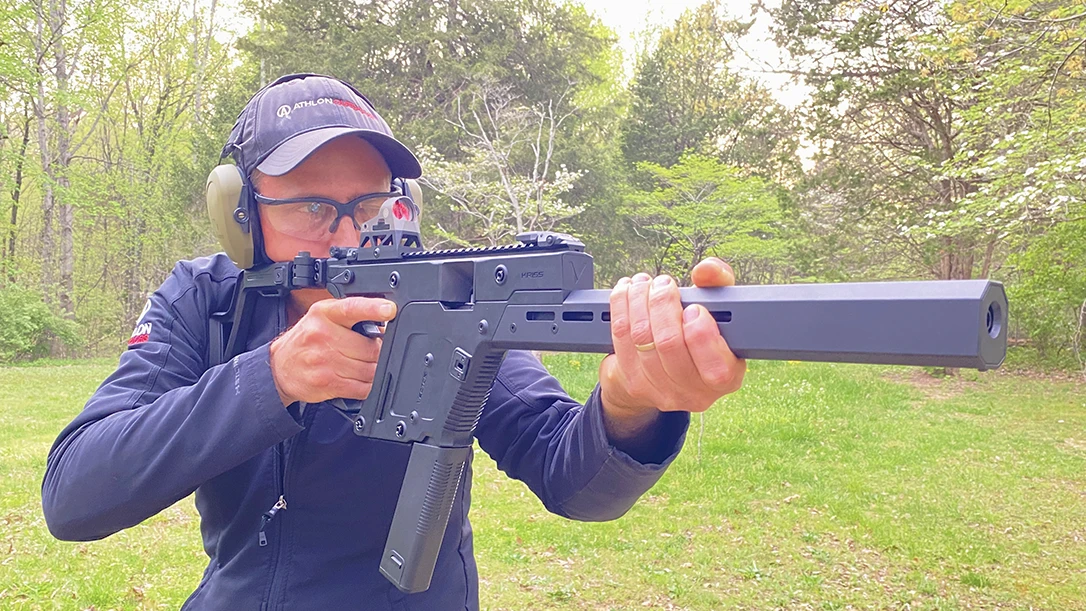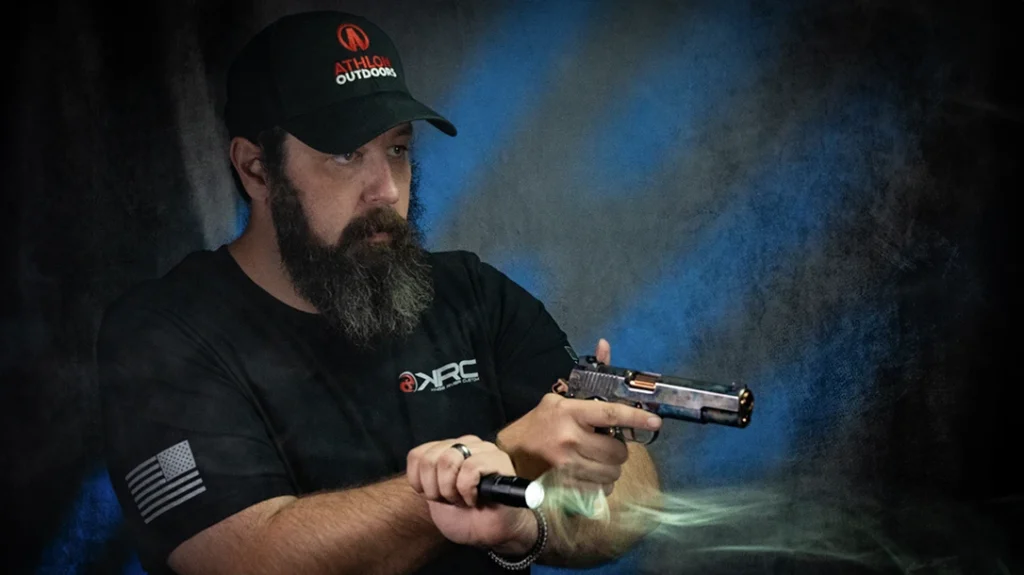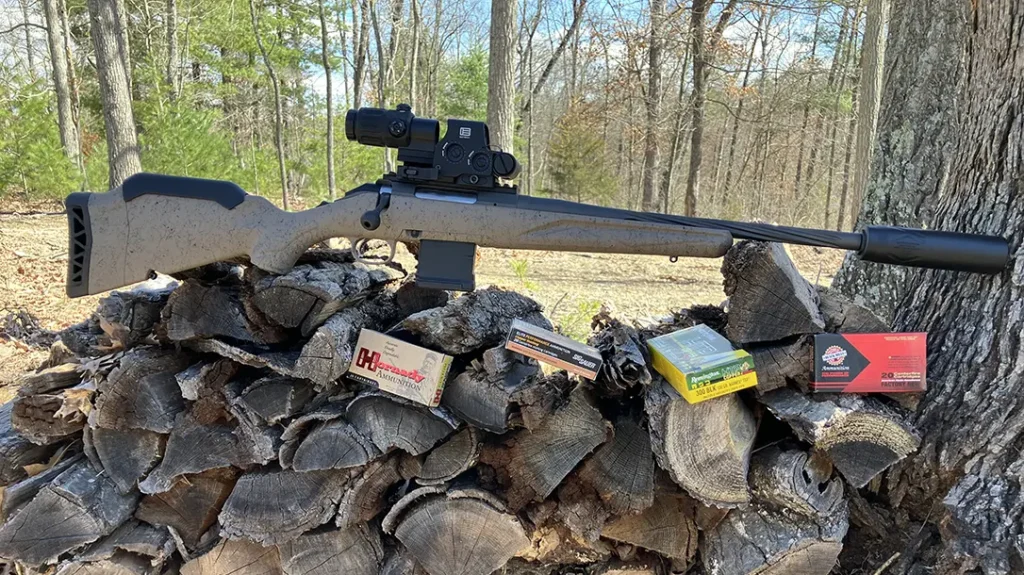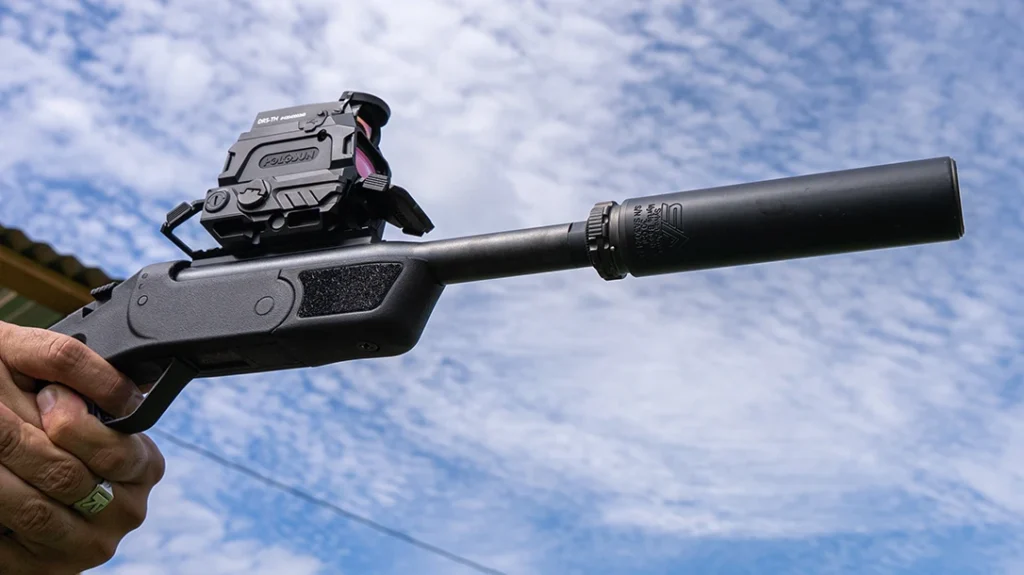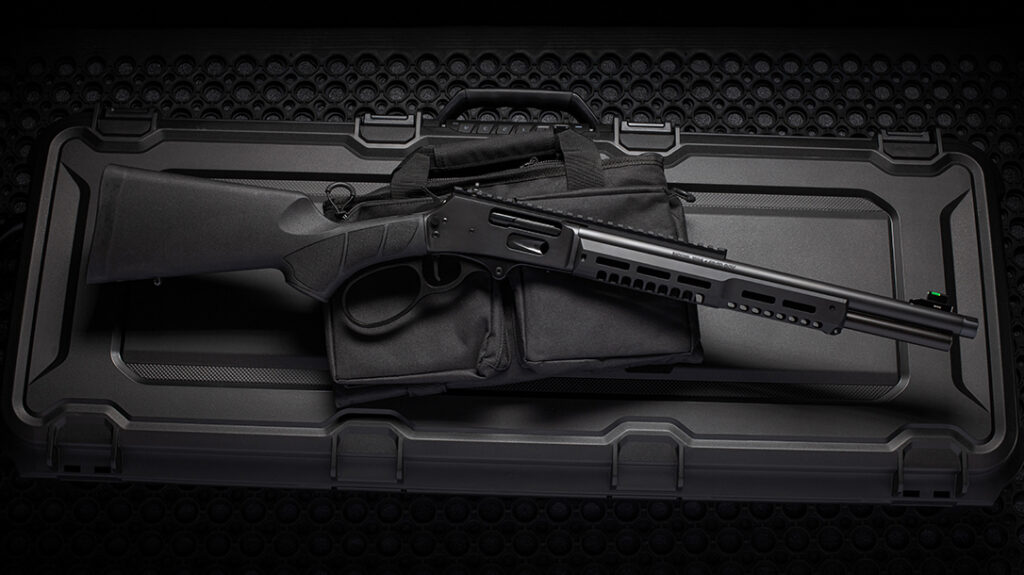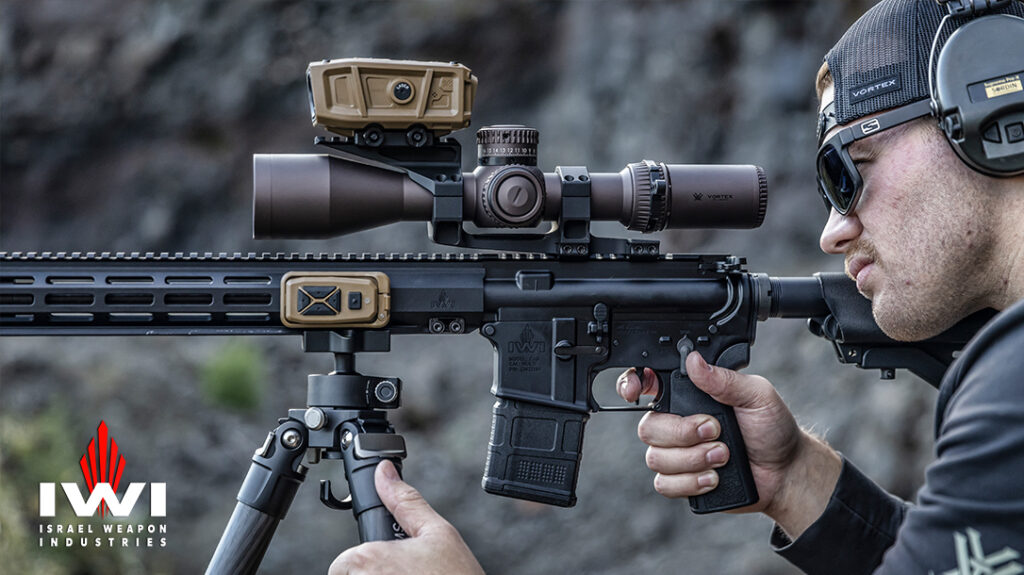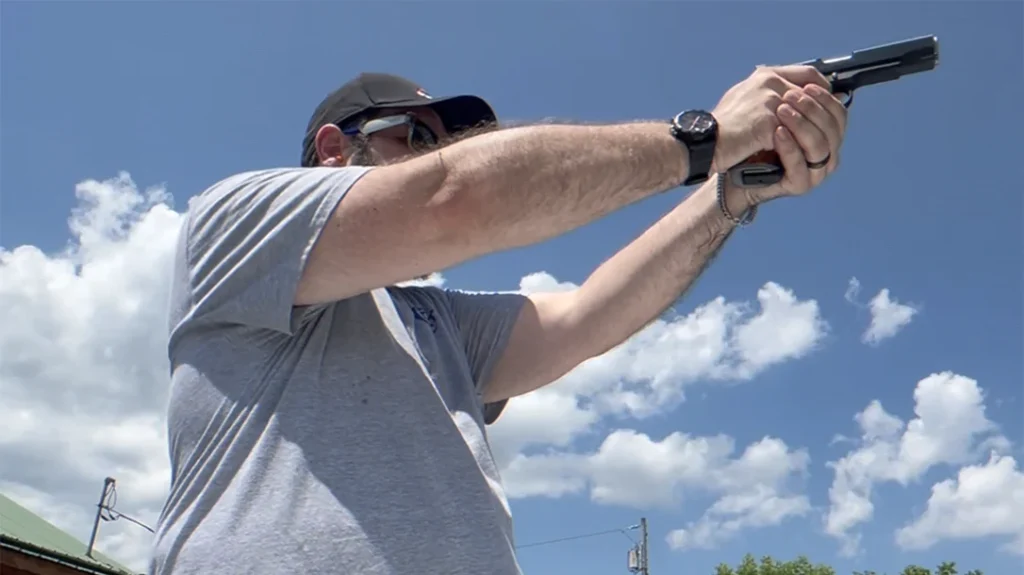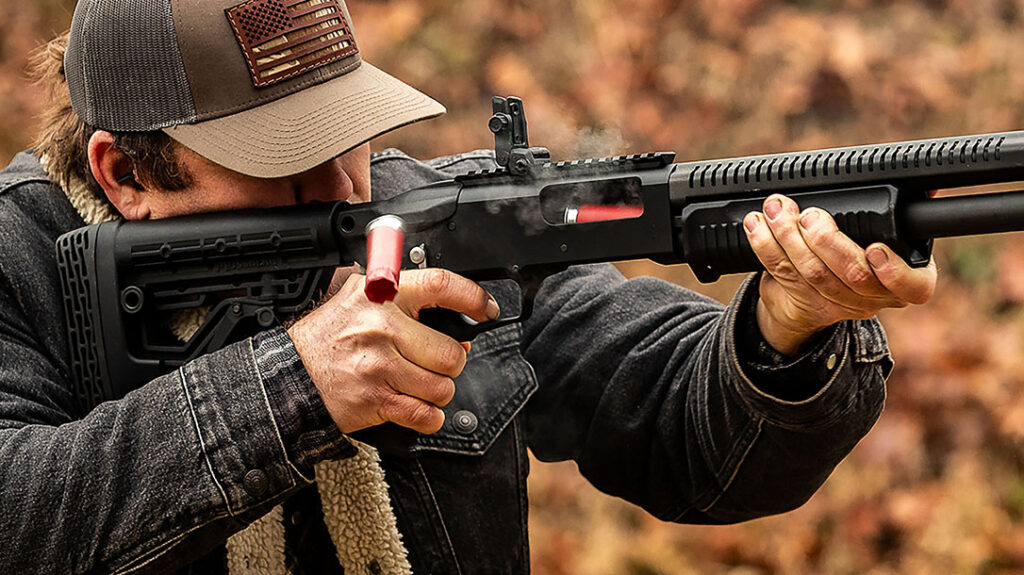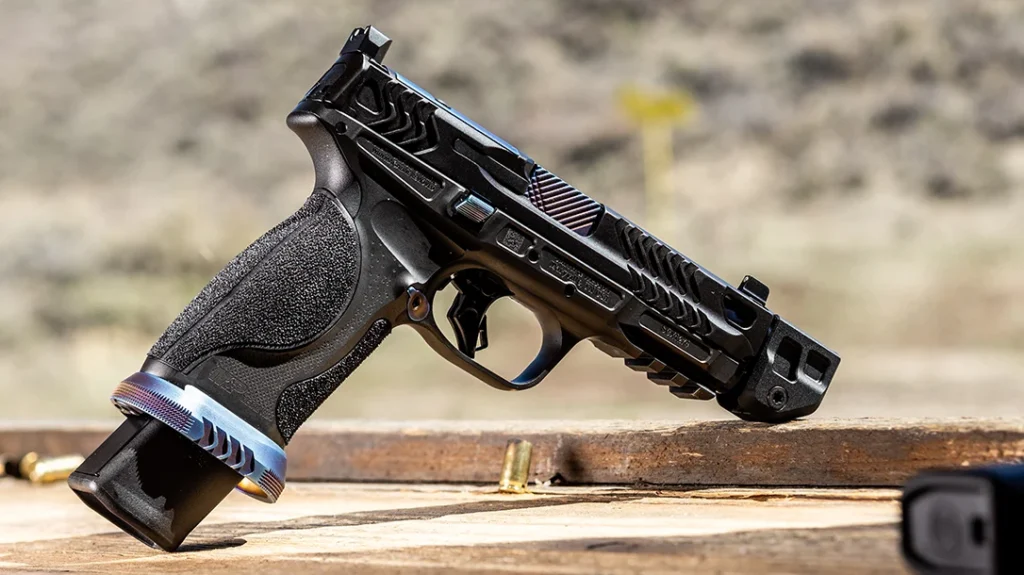With the adoption of select-fire assault rifles, military use of submachine guns declined worldwide. The somewhat anachronistic pistol-caliber submachine gun retained some popularity among elite law enforcement and security details. These groups tended to have closer engagement ranges. Beyond that, their missions were further complicated by the presence of civilian bystanders and the risks associated with over-penetration.
As private citizens, our worries regarding the performance of our defensive weapons in the face of dangerous criminal threats are more akin to those of civilian law enforcement than the military. That’s why pistol caliber carbines generally warrant thoughtful consideration. A firearm like the KRISS Vector Gen 3 comes to mind, too.
The KRISS Vector Backstory

Advertisement — Continue Reading Below
The original KRISS Vector .45 ACP submachine gun, that made use of its unique Super V recoil mitigation system, was grabbing attention in American military circles as early as 2004. It was regarded to have excellent performance characteristics. Its chief characteristic was that extraordinary controllability thanks to the substantial impulse reduction from its unique action.
The Super V recoil mitigation system functions as a type of delayed blowback that also mitigates recoil impulses by redirecting force vectors horizontally and vertically. This is why the KRISS has such an unusual shape. Furthermore, the patented Super V action is perfectly suitable for civilian-legal semi-automatic versions of the KRISS Vector. The first of these became available as early as 2009. The KRISS Vector’s design is now in its third generation with several notable improvements. Beyond .45 ACP, KRISS Vectors can be had in 10mm Auto and 9mm Luger while being available as pistols, SBRs or carbine models.
The KRISS Super V Action

Advertisement — Continue Reading Below
The Super V RMS consists of a small, lightweight bolt that first recoils straight rearward. Then dips downward redirecting the recoil impulse along a new path (or vector, the technical term).
This bolt has a pair of front and rear horizontally oriented guide lugs.The front pair moves along tracks inside the receiver walls. The rear pair of lugs bear against upward slanting slots on the top of a captive and vertically-oriented counterweight resting against massive spring pressure.
The bolt and counterweight form a two-piece, articulated, bolt/bolt carrier assembly that use mass and recoil spring tension to keep the action closed until chamber pressure drops to a safe level. Once that happens, the fired case is ejected and the action continues to cycle.
Advertisement — Continue Reading Below
The Super V’s counterweight is the heaviest component of the bolt/bolt carrier assembly. Because it moves nearly vertically rather than horizontally, it softens felt recoil and acts to reduce muzzle climb making for a more controllable firearm. For a submachine gun, the KRISS Vector bolt/bolt carrier assembly is also comparatively light. This is by design because sess reciprocating mass results in less inertia overall–thus less recoil. It’s also conducive to an extremely high rate of fire–beyond 1,000 rpm!
In addition to the KRISS Vector’s Super V’s system, the weapon was designed with a very low bore axis so all the motion and associated inertia of the moving parts of the operating system are immediately in front of, and below, the trigger finger.
At The Range
When shooting my 16-inch barreled KRISS Vector Gen 3 carbine, I observed so little muzzle jump. The impulse was so soft to the extent that my sights were never jarred from the target board 50 yards away!
Advertisement — Continue Reading Below
Clearly, the extra weight of that long barrel helped, but I’ve never had any 9mm carbine move so little when fired. I found I could reacquire my sight picture faster than with any other 9mm carbine I’ve tested.
The KRISS Vector’s manual-of-arms took a little getting used to. It was mainly due to the odd, rocker style, bolt hold-open/release lever. Likewise, the curious feel of the bolt/bolt carrier assembly changing direction as I drew back the non-reciprocating charging handle also took some getting used to. The KRISS Vector Gen 3 carbine’s controls are simple enough. The ambidextrous thumb-safety levers are excellent and the improved magazine release button, now gated and moved off the front edge of the magazine well, can be reversed for left handers.
Gen 3 Upgrades

Advertisement — Continue Reading Below
Gen 3 guns now allow for the installation of any AR-pattern pistol grip. They also have shorter charging handle levers that orients the fingers closer to the receiver for better leverage when cocking/clearing the action. In addition, the current generation includes removable aluminum handguards with M-LOK mounting slots on three sides. Finally, there’s a section of vertical Picatinny rail behind the receiver to allow for easier stock/brace mounting.
I really loved the compact style of the KRISS Vector’s, three position adjustable stock. It’s rugged and user configurable to fold in either direction. Just be aware of the beating the stock may give your cheek when using the excellent fold-down KRISS adjustable “iron sights”. Made of polymer, the sights are well engineered, but I had to press my cheek down hard against the stock comb to use them. The vertically oriented recoil impulse smacking my cheek bone became downright painful after 30 rounds to the point it was affecting my ability to shoot accurately. The solution for pain-free shooting was simple: to mount a red-dot on a riser. Doing so shifted my sight line at least 3.6 inches above the bore line.
Thoughts & Observations

Advertisement — Continue Reading Below
The KRISS Vector accepts standard full-size Glock magazines which fit flush with the magazine well. However, more fun and tactically practical are the caliber specific extension kits that KRISS offers for $32. The 9mm version increases capacity to an awesome 40 rounds.
Fifty yard accuracy from the bench with a SIG Romero 3 red dot yielded five shot groups averaging 3.5 to 4.64 inches center to center. Trigger pull was fairly light at from 6.5 to 6.75 pounds, but on the long side and soft rather than crisp. The long barrel makes the carbine distinctly nose heavy and quick transitions from target to target are better executed by gripping the forend as far forward as safely practical. I’m inclined to add a tactical light along the bottom of the forend to do double duty as a hand stop.
In rapid fire from the kneeling position, I was impressed at how quickly I could drill my shots into the target at 30 yards. Average five shot group size in rapid fire was 4.01 inches and the aggregate twenty shot group was only 4 inches high by 6 inches wide. I’ve had pistol caliber carbines more accurate than this T&E sample, but never one that could fire as accurately as fast as the KRISS Vector. It’s not a submachine gun, but the platform remains an impressive performer by virtue of the subgun’s unique action design.
Advertisement — Continue Reading Below
Specifications: KRISS Vector GEN 3 CRB
- Manufacturer: KRISS USA Chesapeake, VA
- Caliber: 9x 19mm
- Capacity:40-round magazine, Glock pattern
- Operation: semi-automatic, delayed blowback
- Barrel: 16 inch, 4140 Chrome Moly Steel
- Overall length: 36.75 inches max with stock deployed/ 27 inches folded.
- Weight: 8 pounds 7 ounces w/ empty 40 round magazine
- Finish: black
- Stock: 3 position, adjustable, folding buttstock (configurable for left of right side) & aluminum forend with M-lok slots on sides and bottom
- Triggerpull: single stage, 6.5 to 6.75 pounds
- Sights: aperture rear, post front. windage & elevation adjustable, rail mounted, fold-down/flip-up.
- Accessories: cleaning kit, cable lock
- MSRP: $1,749.99
Performance: KRISS Vector GEN 3 CRB 9 x 19mm
| Black Hills 115 FMJ | |
| Average Velocity | 1,347 FPS |
| Average Group | 3.30 inches |
| Fiocchi Defense Dynamics 147 JHP | |
| Average Velocity | 1,060 FPS |
| Average Group | 2.81 inches |
| Winchester M1152 +P 115 FMJ | |
| Average Velocity | 1,373 FPS |
| Average Group | 1.68 inches |
Performance was tested with a series of five-shot groups fired at 50 yards from the bench with SIG Romero 3 red dot optic. A Competition Electronics Pro-Chrono Digital Chronograph was set 15 feet from the muzzle. Bullet weight is in grains, velocity in feet-per-second and the group size in inches.
